Clea Simon's Blog
October 29, 2025
The Witch Cats are back!
Just in time for Halloween, Level Best Books has reissued the first four “Witch Cats of Cambridge” cozy mysteries: A Spell of Murder, An Incantation of Cats, A Cat on the Case, and To Conjure a Killer. These ebooks are on sale now, too, at only $3.99! Look for a new witch cat cozy – The Cat’s Eye Charm – in December!
For more info, click here.
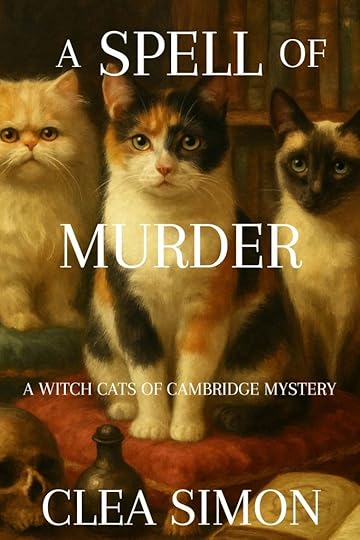
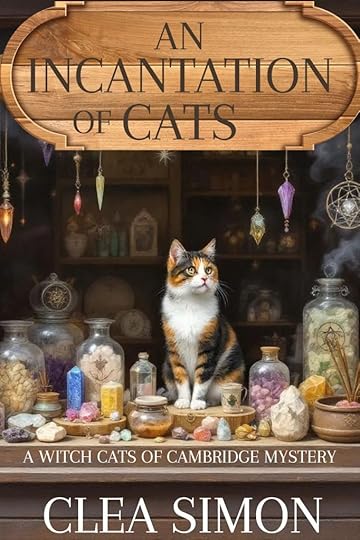
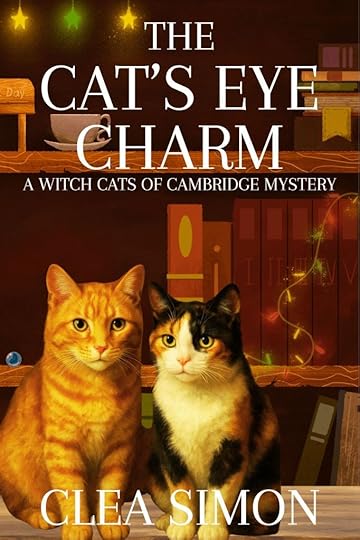
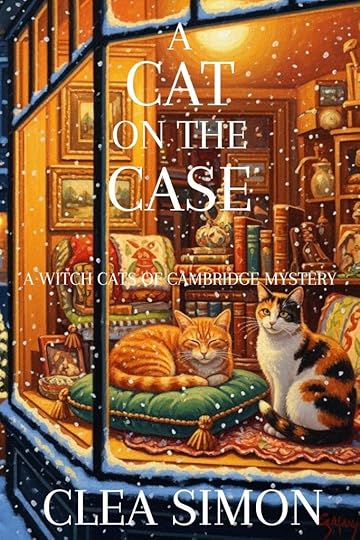
October 1, 2025
Book Stew features Butterfly Trap
Eileen MacDougal is one of those great interviewers who not only reads but thinks about the books she reads. I was honored to be her guest on Book Stew. (If you don’t want to see the YouTube video, you can listen to the podcast on Soundcloud here.)
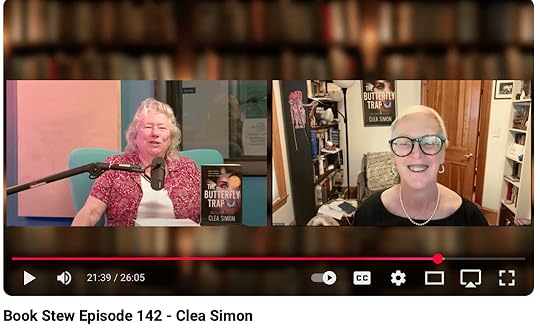
June 26, 2025
E. Jean Carroll’s triumph
No, not the civil case(s) she has won against Donald Trump. I’m talking about her hilarious and brilliant new book, Not My Type: One Woman vs. a President. I reviewed it for the Arts Fuse (which is not paywalled and has a ton of great criticism and arts news). But just in case you don’t feel like going there, here it is:
Book Review: “Not My Type” — Surviving TrumpJune 26, 2025|
By Clea Simon
This is a measured book, harrowing at times but also thoroughly enjoyable. It’s a fun read about a rape trial.
Not My Type: One Woman vs. a President by E. Jean Carroll. St. Martin’s, 368 pp., $3
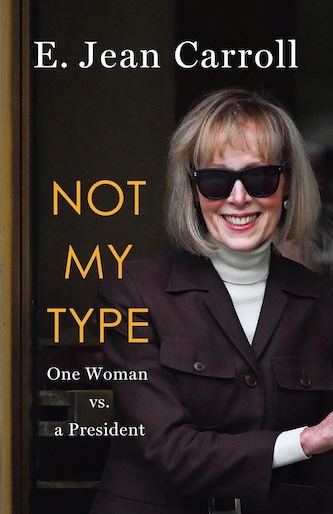
Laughter may be the best medicine, but it makes a pretty great defense too. Author and columnist E. Jean Carroll learned this the hard way: fighting her way out of a sexual assault.
“I laugh when I am nervous. I laugh in awkward social situations. I laugh to get other people to laugh. I laugh with babies…” She goes on. “I laugh to turn a guy off.”
This list – part of a much longer one – stands at the heart of Not My Type, Carroll’s funny, fast, and understandably furious account of her successful civil suit against Donald J. Trump for sexual assault. The above is her later, considered response to an actual question on the stand. Well, not so much a question as an accusation phrased as a request for clarification: “In fact,” asked Joe Tacopina, Trump’s muscle-man lawyer, “in response to this supposedly serious situation that you viewed as a fight, where you got physically hurt, it’s your story that you not only didn’t scream out, but you started laughing?”
“I don’t think I started laughing,” Carroll explains. “I was laughing going into the dressing room… Laughing is a very good – I use the word ‘weapon’ – to calm a man down if he has any erotic intentions.”
Back in the present, Carroll lists the visceral responses all too familiar to survivors of assault: “Don’t make a scene. Don’t frighten him. This is just a mistake. This is just a joke. He’s just playing. This is stupid. This is nuts. Get it over with. Get him off. Don’t freak him out. Hahahaha! Don’t make a scene. Stay quiet. He’ll stop. If you scream, he’ll kill you.”
The trial, complete with transcripts and elaborations like the above, provides the framework for the book. But building on this, Carroll has also crafted a hilariously funny romp about the experience, a delightful read that manages to both follow the details of the case and touch on many of the social issues around it.
Made possible thanks to the passage of the Adult Survivors Act, the trial – like the 1996 attack at its heart – is serious business. But with laughter as her coping mechanism, Carroll doesn’t immediately acknowledge that.
The book opens with her being interrogated by Trump lawyer Alina Habba about the men she has “slept with.” “I hate to ask you…” Habba begins disingenuously. It’s the kind of intrusive and irrelevant line of questioning rape survivors have long had to endure. Carroll, however, turns it on its head. While her answers to the lawyer are straightforward and short, to us, the reader, she goes into delicious diversions, both about the men in her life and her defense team – prepping us for the ordeal to come.
That prep necessitates toning down her joie de vivre. For example, her team drills into her, she has to stop saying “I’m fabulous,” when asked how she is. In truth, that insouciance is masking much deeper hurt. Only after extensive interviews with Dr. Leslie Leibowitz, the trauma expert who created the Sexual Assault Response protocol for the U.S. Air Force, does she admit the truth to herself.
“I flirted with Trump. The flirting led to the assault. I blame myself.” It gets worse: “And because I blame myself for the assault, I never flirt with an eligible man again… I shut down any chance of sparking a romance, and for the next twenty-eight years I miss out on the romps, the sweetness, the tenderness, the delicacy, and the wild erotic pleasures of being with a man.”
It’s a devastating realization, particularly for such a seemingly devil-may-care woman, the successor of a self-described “boy crazy” girl, and drives home the gravity of the trial.
And what a trial it is: Woven into the transcripts and the digressions sits you-are-there reporting on the extensive prep. Early mock juries, for example, are not able to envision Carroll as a woman Trump would want to rape, a sexist and ageist assumption her team must counter. After tracking down a beloved stylist, another amusing adventure, she bobs and colors her hair. “And, no, I do not look like I looked in 1996, but I look like somebody who could have once looked like I looked in 1996.”
Even as she readies herself, you can hear her fighting back. “Why does nobody ask what Trump is wearing?” she asks.
Her team cannot take the stand for her, however, and the questioning (particularly by “[b]ig-necked, big-shouldered, hair-oiled, and handsome” Tacopina) is brutal. “It is a surreal feeling being beat up by a man who is asking me to describe being beat up and assaulted by the man he is beating me up to defend,” Carroll writes.
Along the way, she gives us reminiscences about dropping acid with Hunter S. Thompson, writing (badly) for Saturday Night Live, and plenty of hanging with famous, formidable women from Kathy Griffin to Fran Lebowitz (whom Carroll took camping).
She also gives us breaks from the trial, recalling friendships and romances, noting at one point “because this memoir is about a trial against a not-nice man… every once in a while I must give myself a treat.”
The result is a measured book, harrowing at times but also thoroughly enjoyable. It’s a fun read about a rape trial.
Ultimately, of course, this book is about so much more than the trial. It is about surviving. Because for E. Jean Carroll, laughter is not simply a coping mechanism, it is a cri de coeur. Laughter for Carroll, as this glorious book makes clear, is about life.
Clea Simon is the Somerville-based author most recently of the novel The Butterfly Trap.
June 15, 2025
James Lee Burke!
Fans of author James Lee Burke and, especially, his Hackberry Holland books, will want to pick up Don’t Forget Me, Little Bessie, his latest – and the first he’s written from a female perspective. I reviewed this sprawling new novel in the ArtsFuse this week, and I’ve also pasted the review below. I also got to interview the 88-year-old writer via Zoom from his home in Montana.
By Clea Simon
Over the decades, James Lee Burke has built up a distinctive and glorious body of work, and Don’t Forget Me, Little Bessie is a notable addition to the canon and possibly his most comprehensive.
Don’t Forget Me, Little Bessie by James Lee Burke. Atlantic Monthly Press, 368 pp., $28.
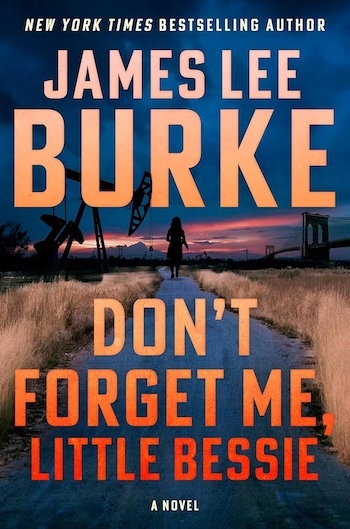
James Lee Burke knows his demons. A longtime recovering alcoholic, the author often burdens his protagonists with such issues as substance use disorder and post-traumatic stress. But in his latest, Don’t Forget Me, Little Bessie, he takes the next step. The 14-year-old Bessie Holland who narrates this new novel may be haunted by an actual haint, or evil spirit. Mr. Slick, as she calls him, is a (possibly) goat-footed creature who accompanies the young teen – and sometimes protects her – as she faces down evil in human form in this sprawling and wonderfully engaging book.
Bessie is the daughter of the onetime Texas Ranger Hackberry Holland, whom Burke fans will know from the short story “Hack.” (He is also the grandfather of the Hackberry Holland who has his own Burke crime fiction series.) Coming of age at the beginning of the 20th century, she will survive violence on the Texas ranch where she was born and during a sojourn to New York City before returning to the land she – and, clearly, the author – loves.
It’s not an easy territory, and Bessie’s journey is not easy either, as we learn early on:
The windmill by the barn was spinning, the hogs grunting in their pen, grit flying, the air blooming with the smell of rain. This was Texas in the dry season. Oh Lordy, I wanted to float away on a cloud. My days were not happy. I longed for my dead mother and my other siblings who found their way to the cities and disappeared into the grind of the twentieth century.
A literary heir of Hemingway and Hammett as much as Faulkner, Burke revels in direct, punchy sentences—though his are cloaked in an old-fashioned formality that delivers a sense of place as effectively as Bessie’s mule, Lancelot, or the outhouse that launches the central drama.
“The Hollands were a violent family but they weren’t bullies. Papa always said you don’t pick a fight with a weakling; it’s unseemly,” Bessie tells us early on. “Sometimes I wanted to flee my family and all their lunatic behavior and live like a normal person, but I have yet to learn what a normal person is.”
Despite her blood-soaked patrimony, it’s normal teenager behavior – a flirtation with Jubal, a young man from a troubled family – that sparks the main conflict in this book, a feud that results in Bessie nearly killing a man. This act links her more closely to her violent heritage, adding new fuel to ongoing conflicts and bringing stark punishment down on those close to her. Not that Bessie escapes; even when she flees to New York, violence will follow her. That she, like her father, is a survivor may owe something to the surprising reappearances of Mr. Slick. They certainly speak of her resilience, another Holland family trait and one linked through Burke’s vivid Southern Gothic-tinged prose to her hardscrabble upbringing and the unforgiving land.
“The world I came from … was feral and founded on murderous policies, not molded by god out of clay but cut from rock and slag and peopled by maniacal preachers and gunmen and helpless women whose babies were rope-dragged to death through cactus,” Bessie recalls, when she is recovering from an attack in New York. “I would not concede, nor reach out to corrupt men who governed a corrupt society. I would prevail, and no power on earth would stop me.”
Like Hammett – and like much of Burke’s better-known crime fiction – the violence here is unvarnished, even when offscreen. “I thought it [the screaming] would stop, as all pain was supposed to do. Instead, it was prolonged and grew worse and made me see images in my mind,” says Bessie, when a friend is raped nearby. “History doesn’t repeat itself,” she says after later crimes. “[I]t metastasizes.”
Against such a dark background, beauty and kindness shine brightly – especially when they are gone. “I missed our farm and the spiritual moments you share with farm animals.” Bessie, while in New York, recounts “the cold, grassy smell on their breaths when they’ve drunk from the stock tank in the early morning, the steam rising from their bodies.” After yet another crisis back home, “all our friends came to see us, carrying stuffed eggs and salads and fruit cakes like it was Thanksgiving or Christmas,” she says. “[O]r the way people do at a wake.”
This is the first time the celebrated author of such books as the masterful Flags Over the Bayou and the Dave Robicheau mysteries has written from a female point of view, but Bessie’s voice flows naturally and believably. In part, that’s because of the author’s great sense of place and time. In part, it’s because Bessie Holland shares many traits with Burke’s other protagonists (and, likely, the author), most notably a stubborn-to-the-point-of-self-destructive moral code that, paired with her nearly equal adherence to courtesy, give her a Quixotic gallantry. And if it seems odd that an 88-year-old male author is speaking through a 14-year-old female character, well, a line at the book’s conclusion as well as the dedication imply that Bessie is based on the author’s mother.
Don’t Forget Me, Little Bessie is not without flaws. The ending of this ambitious book is a bit rushed, as Bessie recounts a series of ups and downs – including the discovery of oil on the Holland ranch and the founding and failure of a film studio – without much detail. In addition, the supporting characters don’t all get the resolutions they deserve. Granted, to do so would probably push this book past 400 pages, but fans of Mr. Slick in particular deserve more.
As in many of Burke’s works, there is also a bit of recycling. Recurring memories of place pop up, increasingly as the book winds down, with Hackberry’s memories of gunfights as well as images of Confederate soldiers rising out of the (electric) mist. This is an observation more than a complaint. Over the decades, Burke has built up a distinctive and glorious body of work, and Don’t Forget Me, Little Bessie is a notable addition to the canon and possibly his most comprehensive. This is James Lee Burke’s world, after all, hell and heaven included.
Clea Simon is the Somerville-based author most recently of the novel The Butterfly Trap.
April 8, 2025
Inspiration and Process: the BAC interview
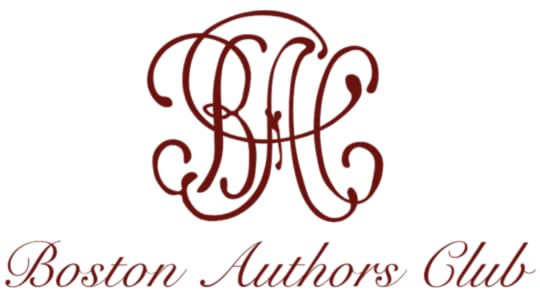 Featured Interview: Clea Simon
Featured Interview: Clea Simon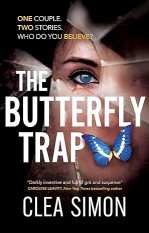 Clea Simon is the bestselling author of three nonfiction books and 32 novels. Her crime fiction is divided between cozy mysteries (most recently her “Witch Cats of Cambridge” series) and psychological suspense, including Hold Me Down (a Massachusetts Center for the Book “Must Read”). A graduate of Harvard University, Clea has contributed to publications ranging from Salon.com and Harvard Magazine to Rolling Stone, Yankee, and The New York Times. She lives in Somerville, Massachusetts, with her husband, the writer Jon S. Garelick, and one cat, Thisbe. Clea’s new novel, The Butterfly Trap, is a psychological thriller with what reviewers describe as “a can’t-put-down dual perspective narrative” and “a shocking climax.” In this interview, Clea talks about the novel’s inspiration, her writing process, and upcoming book launch events.
Clea Simon is the bestselling author of three nonfiction books and 32 novels. Her crime fiction is divided between cozy mysteries (most recently her “Witch Cats of Cambridge” series) and psychological suspense, including Hold Me Down (a Massachusetts Center for the Book “Must Read”). A graduate of Harvard University, Clea has contributed to publications ranging from Salon.com and Harvard Magazine to Rolling Stone, Yankee, and The New York Times. She lives in Somerville, Massachusetts, with her husband, the writer Jon S. Garelick, and one cat, Thisbe. Clea’s new novel, The Butterfly Trap, is a psychological thriller with what reviewers describe as “a can’t-put-down dual perspective narrative” and “a shocking climax.” In this interview, Clea talks about the novel’s inspiration, her writing process, and upcoming book launch events.
Q: The Butterfly Trap sounds like a departure from many of your earlier novels. Can you share your inspiration for the book’s plot line?
I would love to! The Butterfly Trap was sparked by a deep conversation with an old friend. He’s a widower and he’d started dating again. His marriage had been troubled, and when he and his new love came to stay for a few days, it pretty quickly became apparent that this match was going to have some of the same issues. By the third day, while his girlfriend was still asleep, he and I had a heart-to-heart at my kitchen table that ended with both of us in tears. At some point I said, “You always go for the crazy.”
They broke up soon after. But that conversation – and my own reaction – started me thinking about what had been his late wife’s issues and what his own. And that led me to my parent’s marriage. Like the couple in Butterfly, my mother was an artist – a painter and a printmaker – and my father was a physician. And I started thinking about these fights they’d have. They always played out at the dinner table. She’d start needling him and at some point, he’d blow up verbally. He was a big man and loud, and my mom would run off to the kitchen to cry. And I would follow and comfort her, though I would also have this weird feeling that my father – confused by what had happened and his own response – needed comforting too. He was a bull in a China shop, really.
It was an odd dynamic. But ultimately one that I believe I now recognize.I’ve found that a certain kind of straight man tends to fetishize or sexualize women artists. Like, the same woman could be an accountant but she wouldn’t be as attractive. The arts are a mystery, at least for certain sorts of people. They involve channeling other worlds or emotions, and as such they’re very sexy. But they’re not usually profitable, and that can create an unhealthy relationship dynamic. Although I believe my father really loved my mother and was happy to support her arts, he also expected her to have dinner on the table at six every night, no matter where she was in a piece, and to maintain a certain look as a doctor’s wife. After my talk with my friend, all those memories came flooding back with their themes of desire vs. expectations, gender roles and the power of money in a relationship. I wondered how this would play out for a couple today… and I started writing.
Q: You are such a prolific author, having published 32 novels and 3 nonfiction books so far. What is your process for planning a new book and for the day-to-day writing and editing?
I don’t do much planning, to be honest. What sparks me is a scene or a memory, like the one that jumpstarted Butterfly. Basically, there’s usually something I want to understand better – something that feels “hot” or painful, even – and I do that by writing it out, by seeing how people (my characters) would act or respond. At some point, in all my books, I have to do research – whether it’s checking out art supplies or cat behavior. But I’m usually deep in by that point!
As far as my process: I’m a believer in writing every weekday. I usually set a word count goal and I make myself hit it. Often, I write really badly to do that, but that’s part of the process too: you have to get the tap flowing to get through the rusty water to the clear! Giving myself permission to write a bad first draft is something I have to re-learn every time, but it’s a necessary part of the process (and often there’s some good in there).
Q: Do you have advice for new authors about how to stay engaged and productive over the long term?
Yes! Make yourself write on a regular schedule. For me, it’s every weekday. Not everybody can do that, but you can set a schedule and stick to it.
Q: Is there anything you particularly look forward to in launching a new book? What events and social media promotions are on tap this spring to introduce readers to The Butterfly Trap?
I love doing in-person events! I’ve already done the book launch for The Butterfly Trap at Harvard Book Store (they have signed copies for sale) and I’ll be going to the Mysterious Bookshop in New York before this April newsletter comes out.
I am convening a mystery conversation at Porter Square Books on April 15, 7 p.m.,that should be great fun. Joanna Schaffhausen, who writes thrillers, and Karen Olson, whose latest book is a re-imagining of the six wives of Henry VII, will join me and we’ll talk about plotting, process… everything you asked me. And we’ll be taking questions from the audience as well! Program details are below. Everyone is invited to join us!
Interview by Mary J. Cronin
April 2, 2025
“The all-too-human mess of romantic relationships”
“Engaging…Simon’s keen eye for the way in which her characters willfully deceive themselves is on point.” This Arts Fuse review of The Butterfly Trap comes awfully close to spoilers in its in-depth analysis of the plot. Be forewarned! However, critic Matt Hanson does shed some insight on “the all-too-human mess of romantic relationships” in this “engaging new novel.”
Here’s the link. Full review cut and pasted below.
By Matt Hanson
The all-too-human propensity for not only telling yourself what you want to hear but taking what you see at face value is what drives the action.
The Butterfly Trap by Clea Simon. Severn House, 224 pages, $29.99.
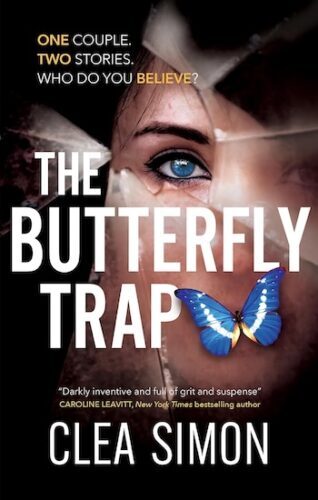
Greg Steinman, the protagonist of Clea Simon’s engaging new novel The Butterfly Trap, is already in over his head at the start of the story. “She was, without a doubt, the most beautiful thing he’d ever seen…like an after-image, a visual echo, the movement taken up by the wide sleeves of her shirt…he could have watched her dance all night.” Greg’s so instantly love struck by Anya Wildman, this lovely creature undulating before him, that he doesn’t realize how he might only be seeing what he wants to see. Not the worst thing in the world to be hit by love at first sight — ancient wisdom claims that there’s really no other way. Still, being blinded so suddenly is never a promising sign.
The all-too-human propensity for not only telling yourself what you want to hear but taking what you see at face value propels the narrative’s action. Greg is a decent sort of fellow, a competent and hardworking doctor. It’s only natural that he should become weak in the knees for Anya, a lively but anxious artist. Opposites attract and all that. He’s dutiful, even obsequious, about wanting to make her “his” lady. A typical male, he blithely assumes his puppy-like devotion will win her over. Then they’ll get married, have kids, and cuddle in a suburban nest.
The titular butterfly is the spontaneous token of his affection, purchased at an outdoor art market (which really isn’t the best place for impulse buys). Greg sees it as an ideal gift. Surely Anya will appreciate how poetic he is, that he associates her with this imagery: “a butterfly, mounted and framed. Bright blue on black velvet. A pop of color, the words sprang to mind. One of those phrases he’d heard at the gallery, he figured. He almost laughed, it was so perfect.” Of course, picking out gifts can be a tricky thing; a test of your ability to understand the other. It’s not a test of the other person’s taste, but of your own. Last thing you want is to give someone else something that only you would like.
Greg’s sleazy friend Pete always reeks of booze and has an eye cocked for the nearest hottie at the bar. He initially seems to be a walk-on character except, as the story progresses, he has an Iago-like tendency to be the devil on Greg’s shoulder, a voice for his worst instincts. Pete warns him that she might be too good to be true and that she can’t be trusted. Everyone has that kind of person in their life and usually it’s best to keep them at arm’s length.
What was really interesting and innovative about the way The Butterfly Trap is structured is that the first half of it is told entirely from Greg’s point of view. Naturally, the reader sides with him, partly because we are only privy to the information he hands us. We are confined in his perspective. When he’s confused about something we assume that he should be relied on as a narrator. After all, he’s the one who should know the best.
Yet he isn’t reliable. The second half of the story is all Anya and she paints an entirely different picture. The truth is, she’s much more ambivalent than Greg ever is about their relationship. Pretty much every aspect of it, at that. She appreciates Greg’s attention and his devotion is a balm to her heart given that she’s been reeling from a breakup with the kind of charismatic dirtbag you meet in the struggling artist’s world. Greg’s willingness to underwrite her studio expenses doesn’t hurt either.
Anya’s not really a sellout. She understands that Greg is a good guy and she recognizes that it’s a valuable thing to have a decent, honest, genuine fellow in her life. The problem is that the relationship doesn’t work in the kind of way which is most fulfilling for her. When Greg does her a particular favor at her big gallery opening, he can’t quite comprehend why she’s so upset by what he did. And Pete might be a sleazy creep in many ways, but at the same time he might know more about the real behind-the-scenes emotions upsetting Anya as she tries to adjust to domesticity.
The story does follow some fairly well trod ground, it must be said, though Simon’s keen eye for the way in which her characters willfully deceive themselves is on point. The narrative picks up plenty of momentum as Anya’s testimony fills the poignant blank spots in Greg’s account. We sympathize with her and understand her hesitation. Her penchant for self-destruction might be somewhat inscrutable to some readers. What’s less sympathetic is how Greg reacts after what always took for granted suddenly gets spun around before his very eyes. The butterfly art he thought was charming — well, the spell doesn’t last.
Their fate as a couple is tragic, indeed. Once we know the whole story we can see how it was headed the wrong way all along. It’s the all-too-human mess of romantic relationships: what each person wants, needs, hopes for, longs for, and what they have to tell themselves in order to keep going amid all that internal clangor is, when you get right down to it, the oldest story there is.
Matt Hanson is a contributing editor at the Arts Fuse whose work has also appeared in the American Interest, theBaffler, the Guardian, the Millions, the New Yorker, the Smart Set, and elsewhere. A longtime resident of Boston, he now lives in New Orleans.
Book Review: Clea Simon’s “The Butterfly Trap” — Double Trouble
Book Review: Clea Simon’s “The Butterfly Trap” — Double Trouble
March 24, 2025
“A tale of obsession and desperation”
“This book plays with the readers mind in crazy ways,” said Henry Santoro (aka Henry in the Hub) at the start of our interview for WGBH Boston. The interview is airing this weekend on WGBH.org/89.7 WGBH-FM but you can both listen to it and read the transcript here. When we spoke, Henry was only halfway through The Butterfly Trap and kept warning him not to give him any spoilers. I didn’t, and once he finished, he didn’t either. He did hit on some key points though … Was there really that much sex in the book? I guess so! Check out our chat:
[image error]
March 21, 2025
Clea Simon has written over 30 books, both nonfiction and fiction. Her latest book is “The Butterfly Trap,” a “he said, she said” novel set within the arts and medical community in Boston — an area that Simon has called home since her days at Harvard.
She recently joined GBH’s Henry Santoro. The interview was slightly edited for clarity.
Henry Santoro: This book plays with the readers mind in crazy ways. Please describe what a “he said, she said” book is.
Clea Simon: It is pretty much as it sounds, Henry. The book starts with the story of a relationship between two young people, Greg and Anya. And it begins with Greg’s retelling of the story, his sort of fairy tale discovery of this beautiful artist named Anya. Greg is a medical researcher. So, when he meets Anya, after he gets dragged to a party by his buddy Pete, he learns that Anya is a painter. Greg feels like it’s a whole new world that is full of mystery and creativity and all these things he doesn’t have in his life. But then halfway through, we flip [the story] and we get Anya’s perspective. And let’s just say things are a little different.
Santoro: Did you have to change your approach to how you create characters? Because these two characters are, I can’t even describe them. But you allow the reader to get to know them well. Did you have to change your style of writing to bring these characters to life?
Simon: Well, I did have to inhabit them, and I had to inhabit them for a reasonably long time. Because, yes, half the book is one and the other half of the book we learn about the other character. So, I don’t know if that’s really changing the writing. However, I did have to get into their mindset and that meant also incorporating their blind spots because, after all, we are all the heroes of our own stories. But you know, sometimes maybe we shouldn’t be.
Santoro: We should say that Greg is a medical student. And he is doing a residency at Mass General. Kind of a nerd, if I say so myself. Anya is this beautiful, starving young artist hoping to make it big. She’s freewheeling. She likes to party. She lives the bohemian lifestyle. Not that this has anything to do with anything, but tell us about your parents.
Simon: Yes, to some extent, they are very loosely based on some of the tensions I saw in my own parents’ marriage. My mother was an artist. She was a painter and a printmaker. My father was a physician. I think he fell for her because she was an artist, because of the mystery, and because of the beauty of that. But also, he was the breadwinner of the family. So, she could paint, she could create, but she had to have dinner on the table by 6 [o’clock].
Santoro: And that’s what Greg wanted to do. He wanted to make sure that she had the financial resources to be able to paint at will.
Simon: He believes he’s going to free her from a life of debt and worry.
Santoro: There is more sex in this book than any of your other books. Can sex be a character?
Simon: Sex is a means of communication, so you can read a lot into it by how people are doing it.
Santoro: Did you feel uncomfortable writing these sex scenes?
Simon: I loved writing them. I feel uncomfortable when people read them — or at least when they read them in front of me.
Clea Simon will be at Porter Square Books, on April 15 at 7 p.m.
Henry Santoro hosts midday newscasts on GBH Radio and contributes to breaking news coverage and other hosting duties for GBH’s daytime programming. Feedback? Questions? Story ideas? Reach out to Henry at henry_santoro@wgbh.org.
Marilyn Schairer is a reporter and producer for GBH News. Feedback? Questions? Story ideas? Reach out to Marilyn at marilyn_schairer@wgbh.org.
[image error]March 13, 2025
Our mothers, ourselves? Chatting “Butterfly Trap”
Caroline had such good questions! Add in that we’ve been friends for decades now, and our discussion of The Butterfly Trap was bound to be fun. We can’t take your questions anymore, but you can eavesdrop as we talk “Butterfly,” writing, mothers, and more!
March 12, 2025
Tonight! A Mighty Blaze
A Mighty Blaze began as a pandemic-era response to all those cancelled book tours. It continues as an engaging discussion series between authors. And, boy, am I lucky! Tonight I get to discuss The Butterfly Trap on A Mighty Blaze with AMB found Caroline Leavitt (a NYT-bestselling author, most recently of the lush Days of Wonder). You can join the fun on the Blaze Facebook or Youtube pages. Come with your questions!
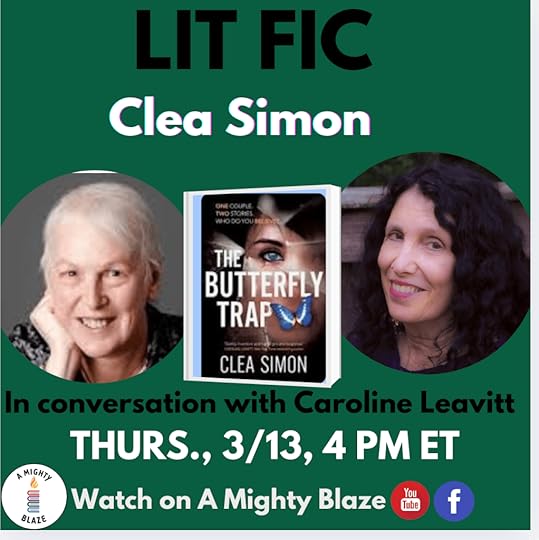 https://www.facebook.com/amightyblaze...
https://www.facebook.com/amightyblaze...
March 11, 2025
“Risk and danger”: BOLO Books on “The Butterfly Trap”
“Risk and danger exist with each turn of the page, with readers never quite knowing who to trust….”
Wow, wow, wow! That’s just one of the lines from this boffo review of The Butterfly Trap by BOLO Books! I am beyond thrilled.
Here’s the whole review (or you can just read it here:
The Butterfly Trap – The BOLO Books Reviewby Kristopher | Mar 10, 2025 | Review |
Across her career, Clea Simon has proven that her writing skills can tackle just about any style choice. She’s written comforting cozies to paranormal romance to gritty noir with settings as disparate as Cambridge, Massachusetts or Boston’s underground music scene. Her characters range from scrappy investigative journalists to cats…yes literal cats. With The Butterfly Trap, Clea Simon is now turning her pen towards domestic suspense and with this he said/she said recounting of a troubled relationship, she digs deep and manipulates tropes to give her fans another unforgettable reading journey.
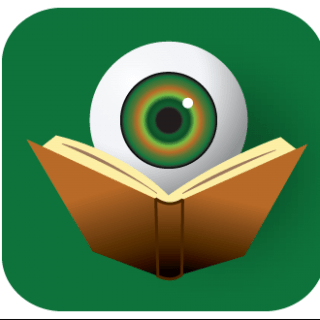
The Butterfly Trap begins the night Greg first meets Anya. Readers experience things from Greg’s point of view, learning how this man’s traditional values and lifelong goals dictate his choices. Readers follow along as this accidental meeting evolves into a full-fledged relationship, with those in their orbit seeing them as the perfect couple. Greg’s version of events takes up the first half of this tightly constructed novel.
As readers will expect, the second half of the novel then shifts to Anya’s point of view—where things don’t necessarily match up. Things that once seemed like fact shift into something very different. Anya’s artsy and exuberant personality is in direct contrast with Greg’s more sensible and shy nature. Any reader will anticipate that a conflagration is about to occur and it’s unlikely to end well for someone. But the question remains, for who?
The Butterfly Trap is very much a novel about perception and how that manifests in relationships. Each of us views our lives and decisions in unique ways that may look very different to those witnessing things from the “outside.” It’s a look at how individuals can manipulate reality to suit specific needs. Domestic suspense can take on a variety of different shades, but more often than not, there is a dark undertone to the proceedings. That is very much what Clea Simon is giving in The Butterfly Trap. The He Said/She Said structure of the novel lends itself to obfuscation. Risk and danger exist with each turn of the page, with readers never quite knowing who to trust.
Clea Simon knows the craft of writing, so The Butterfly Trap is a highly readable book that hooks readers early and never lets go. However, perhaps her strongest asset for this particular novel is her knowledge of the tropes so common in crime fiction. This is an author well in control of her narrative and it will be the rare reader who doesn’t fall into the traps she has buried within the tale. In many ways, The Butterfly Trap is almost too authentically real, reflecting a version of human nature that may make readers uncomfortable—in the best way possible. Neither Greg nor Anya is particularly likable, but they are never less than fascinating—and viewing their “courtship dance” knowing that things are heading towards trouble keeps the reader invested to the end.
If you are looking for a relationship book that seems both familiar and fresh simultaneously, Clea Simon’s The Butterfly Trap is an excellent choice.



